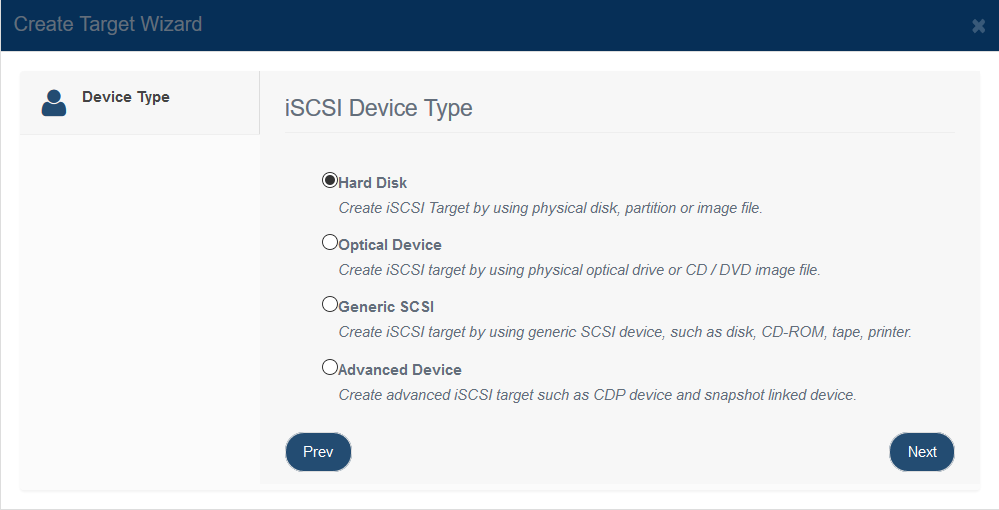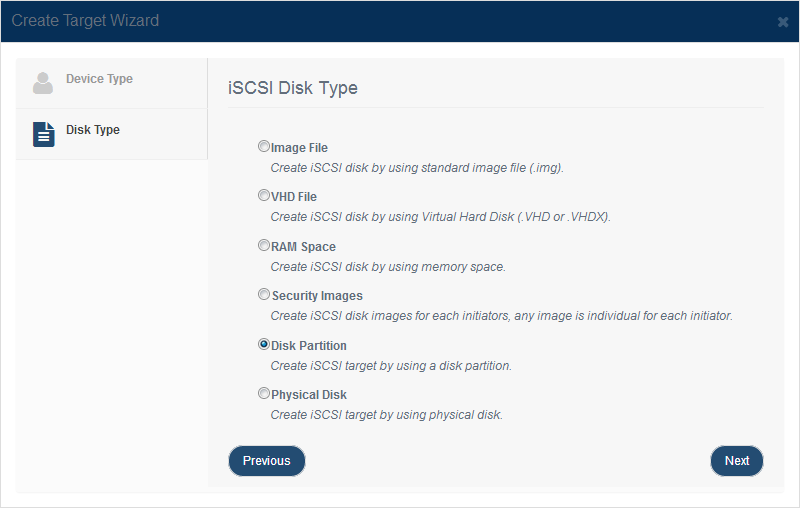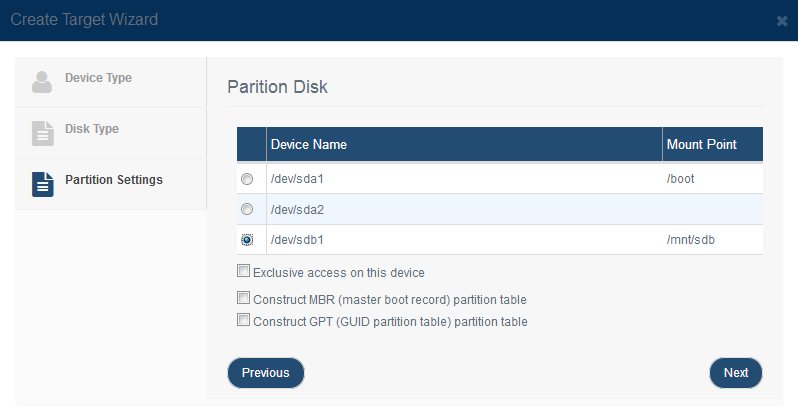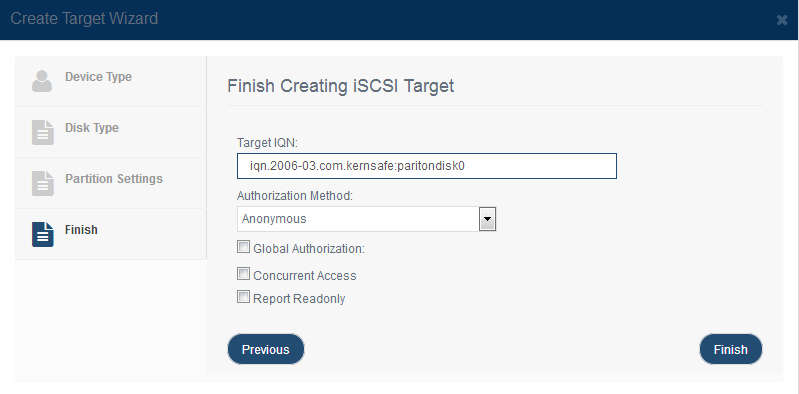

| Disk Partition Device | KernSafe Storage Center |
|
Disk Partition device exports an existing partition to an iSCSI disk device. KernSafe iSCSI SAN will deliver the existing file system to client machines, it is very easy way for storage sharing. Creating Disk Partition Device Follow the steps below to create a new image file: Step 1. Click New button on the top toolbar of the management system, then the Create iSCSI Target wizard popup up.
Choose Hard Disk in the iSCSI Device Type group. Press the Next button to continue.
Choose Disk Partition in the iSCSI Disk Type group. Press the Next button to continue. Step 2. Configure the Disk Partition Device.
Select one physical partition from the Device parameters list. There are four options for choosing: Note: Do not select Construct MBR or GPT, the iSCSI device based on this partition, can be re-partition, re-format. The disk created by MBR or GPT method can't be re-partitioned, because the partition table is fixed. Step 3. Finish Creating iSCSI Target
Type the Target Name. Select an authorization mode, if you don't know how to do it, you can see the topic Authorization Mechanism. Global Authorization: Indecate target will inherit authorization information (CHAP and IPFilters) from global, otherwise target will have its own authorization information. Concurrent Access: Indicate target allow concurrent read-write operations. Report Readonly: Indicate target will report as read only device if initiator don't have write access. Press the Finish button to complete the iSCSI device creation. |
|
SUPPORT
- Forum
- Support Ticket
- [email protected]

- Voice Mail:
- +1 (518) 289-4888




